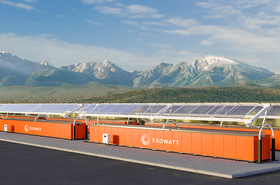We all know we need to reduce greenhouse gas emissions. We also know that we need to cut waste. However, recent research suggests that some of our efforts to reduce GHG may be increasing waste.
Specifically, legislators are pushing organizations to reduce their emissions. In the data center sector at least, many operators are keen to show they are doing so, with science-based net-zero plans.
But the problem is that these laws and plans are based on carbon accounting, and all carbon accounting schemes have a blind spot. According to a paper presented at the Life Cycle Management Conference 2023, they do not take sufficient account of the embodied emissions of the products and services involved.
The trouble with the GHG Protocol
The leading standard for “science-based” GHG measurement is the GHG Protocol, which was defined by the World Resources Institute (WRI) and the World Business Council for Sustainable Development (WBCSD).
This is mighty work and has successfully driven a huge effort at decarbonization. It underlies almost all the work being done by governments and businesses.
There is a problem though. The GHG Protocol does not handle embodied carbon and the circular economy properly, according to the paper by Astrid Wynne of TechBuyer and Rich Kenny of Interact: Limitations of linear GHG Protocol carbon reporting in achieving circular progress.
This means that optimizing your GHG score will generally push you towards an old-school (bad) “take-make-waste” supply chain and can even penalize you if you take measures to reduce waste by moving towards a circular economy.
The trouble is partly that there’s no standard way to report on circular economy progress.
“There is a strong basis of science-based methodologies to demonstrate carbon cost and reduction through the Greenhouse Gas Protocol (GHG Protocol), and this is being adopted by legislators mandating company reporting of their carbon footprints,” said Wynne and Kenny. “There is currently no equivalent global circular economy metric.”
The point they make is that reporting standards guide actions. If everyone is following the GHG Protocol, and that Protocol doesn’t recognize the circular economy, then neither will their actions.
“With company carbon accounting presenting no difference between new products (part of the linear, take-make-waste system) and a circular approach (product life extension, reuse and refurbishment/remanufacture), there is no established, universal carbon benefit for companies involved in circular economy practice.”
The problem is worse than simply ignoring the values of a circular economy. The gap in the GHG Protocol may actually prevent moves towards one.
Without some verifiable accounting for the circular economy, they say: “Societal shift towards [a] circular economy as a means to carbon reduction is not supported (and may even be disincentivized) at [a] company reporting level.”
Consider an example from daily life. If you have a petrol car, then you can reduce your operational emissions by junking it and buying an electric vehicle, which you charge with low-carbon electricity. However, your total footprint is a more complicated equation. It may go up, because of the environmental cost of junking your old car, and the embodied energy of the new one, including its batteries.
Data centers will have plenty of similar examples, from questions such as how much to extend the life of existing servers, and whether to shift from conventional backup power to new sources such as fuel cells.
Scope 3 of the Protocol does include upstream and downstream emissions, but has major gaps, say Wynne and Kenny: “There is no mention or provision for the purchase of reuse, remanufactured or refurbished hardware or for sale to a secondary user. The assumption is that all companies buy new and then destroy after first use.”
If a company buys a second-user system, then the Protocol says they have to record the entire carbon footprint of the product, even if the previous owner has already added it to their own reporting.
When they pass it on, they have to record the entire end-of-life carbon footprint, even if it goes on to be used again.
As the authors said, the Protocol doesn’t just ignore circularity, it penalizes it. If companies take a reused product, “they must also add on emissions from the refurbishment process, which could perversely make a new product have a lower carbon footprint than a refurbished alternative.”
What can we do about this?
Any changes to the GHG Protocol itself will take a very long while to implement. Kenny has a few suggestions for what to do in the meantime.
“As a first step, embodied carbon should be attributed to a fixed lifetime of an asset and proportion written down every successive year within this lifetime (for servers this should be 6 years or more),” he says in a LinkedIn post.
Carbon can be amortized just like the financial value of a product in traditional accounting, an idea Kenny touched on in a podcast we recorded in 2022. When they are sold, their residual embodied carbon would be passed on to the next user.
That’s entirely voluntary and would encourage companies to keep servers running longer, as well as passing them on to a second user where possible.
In their paper, Wynne and Kenny suggest that individual industries, such as plastics, electronics, and fashion might move quickly to create standardized methodologies for reporting in their sector, which recognize the value of passing products to a second user and extending product lifecycles.
Kenny is actually optimistic, commenting to DCD that the system "just needs a little streamlining to make it easier for people to see the benefit of a circular economy."
In the meantime, though, any company doing the planet a good turn by extending product life, may automatically take a hit on their “official” net-zero progress, and look like a worse global citizen.
Let's get that streamlining in place, eh?






